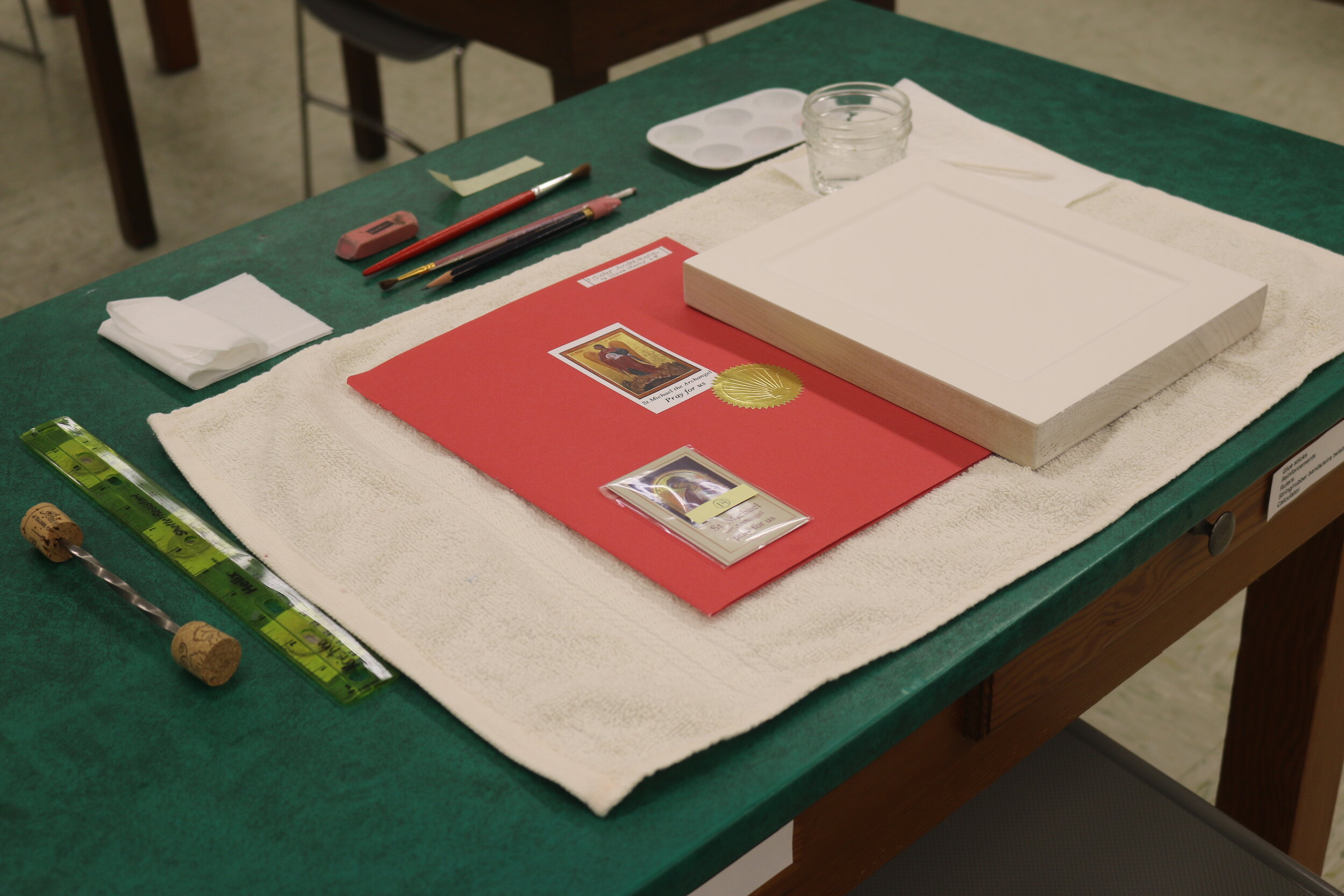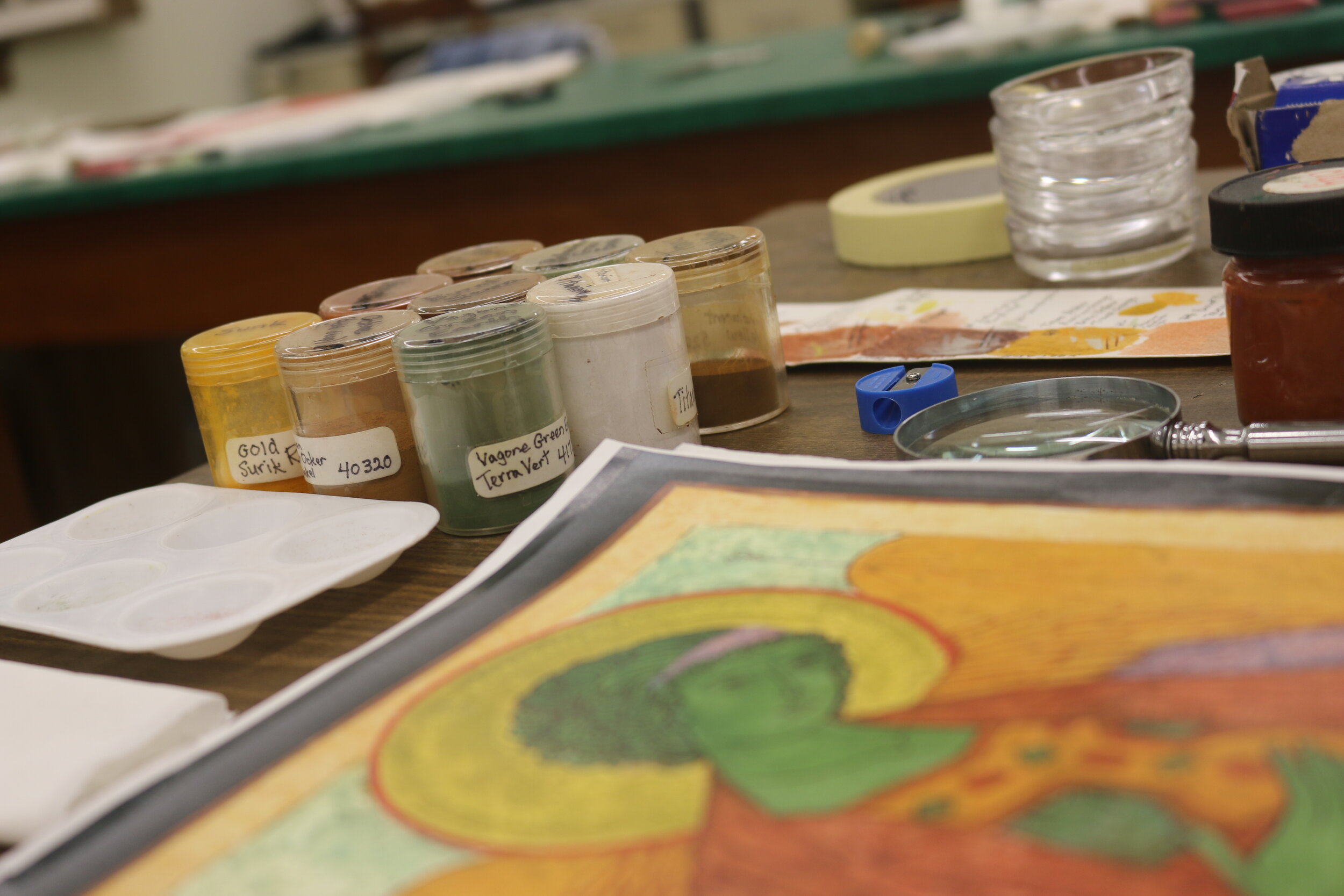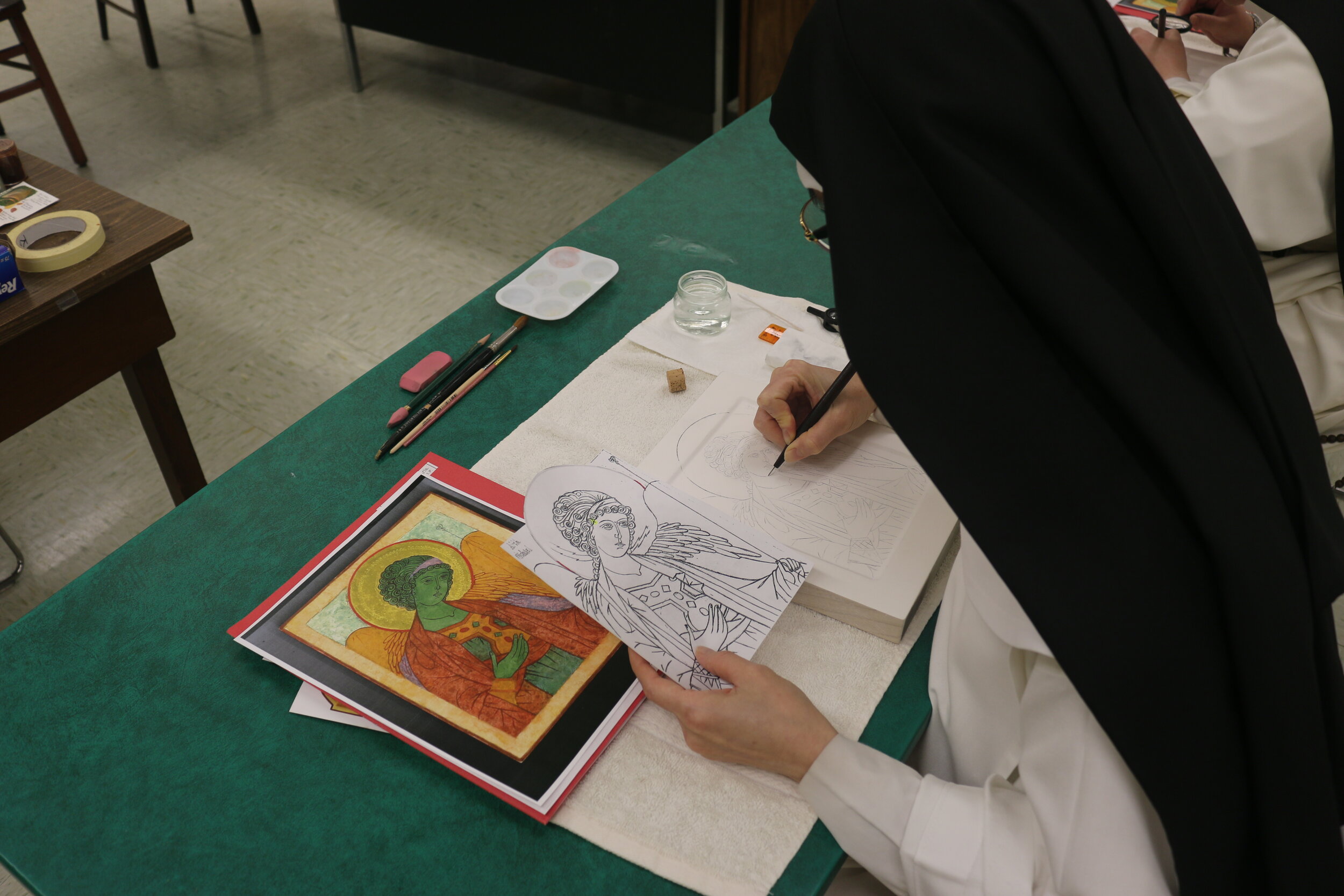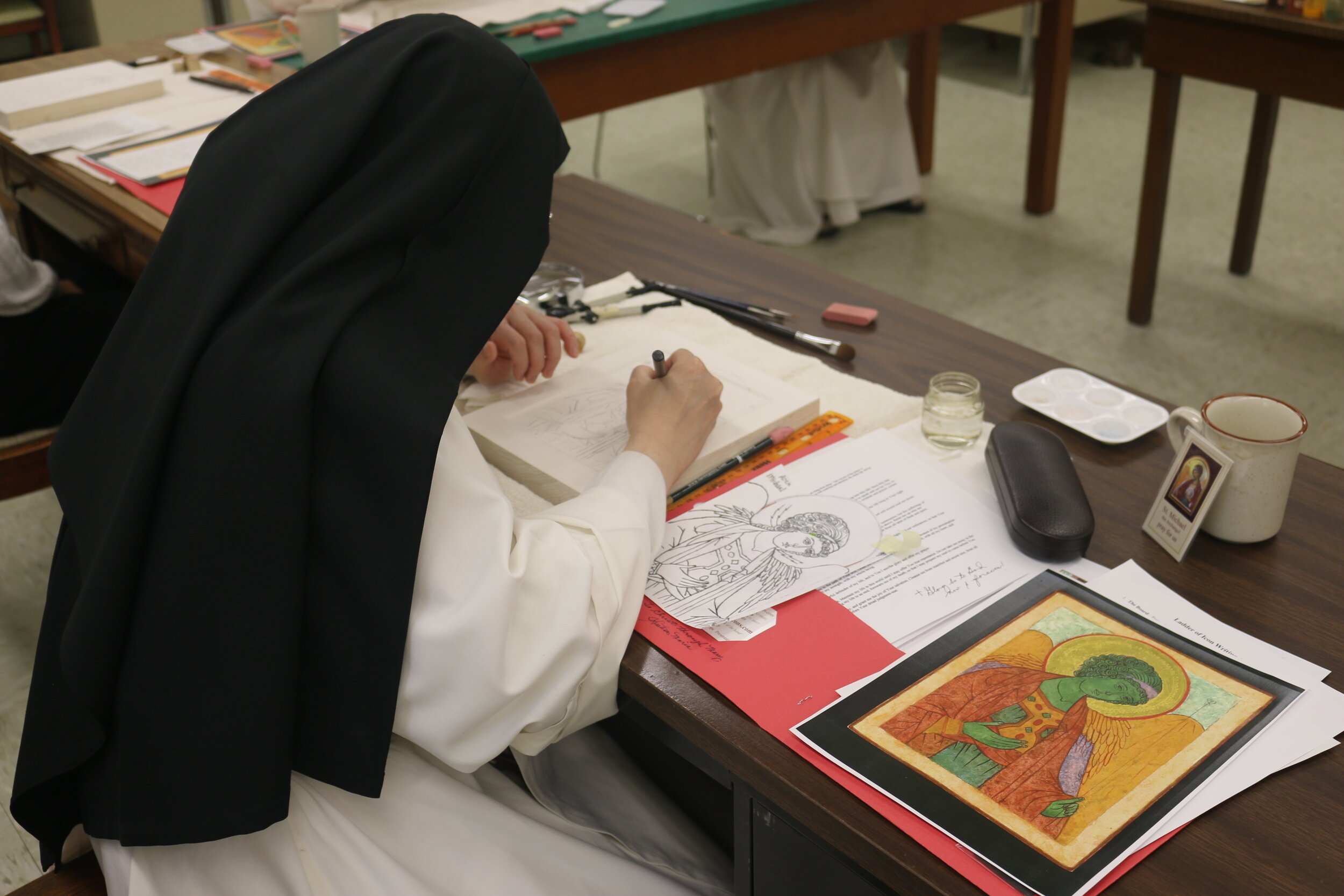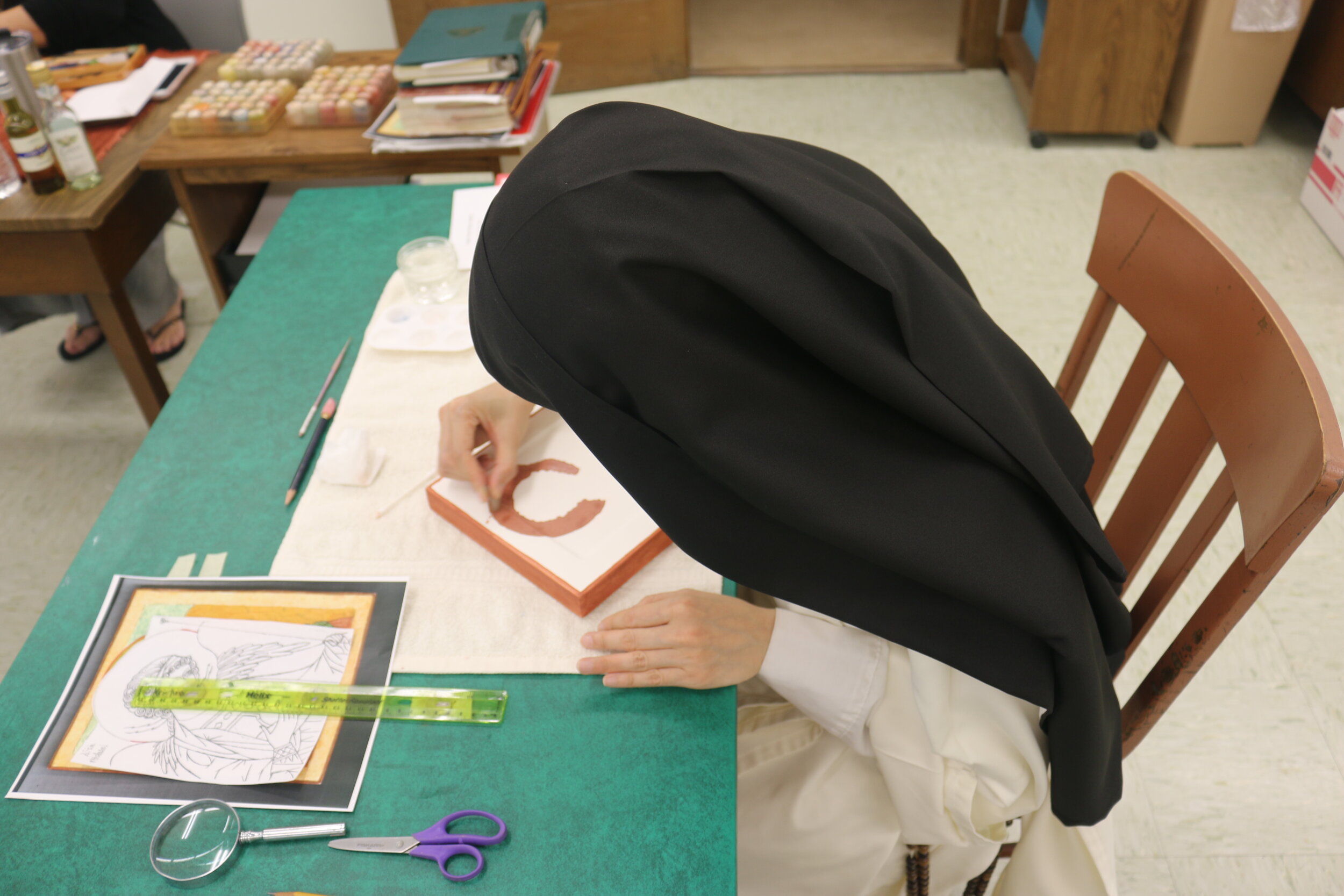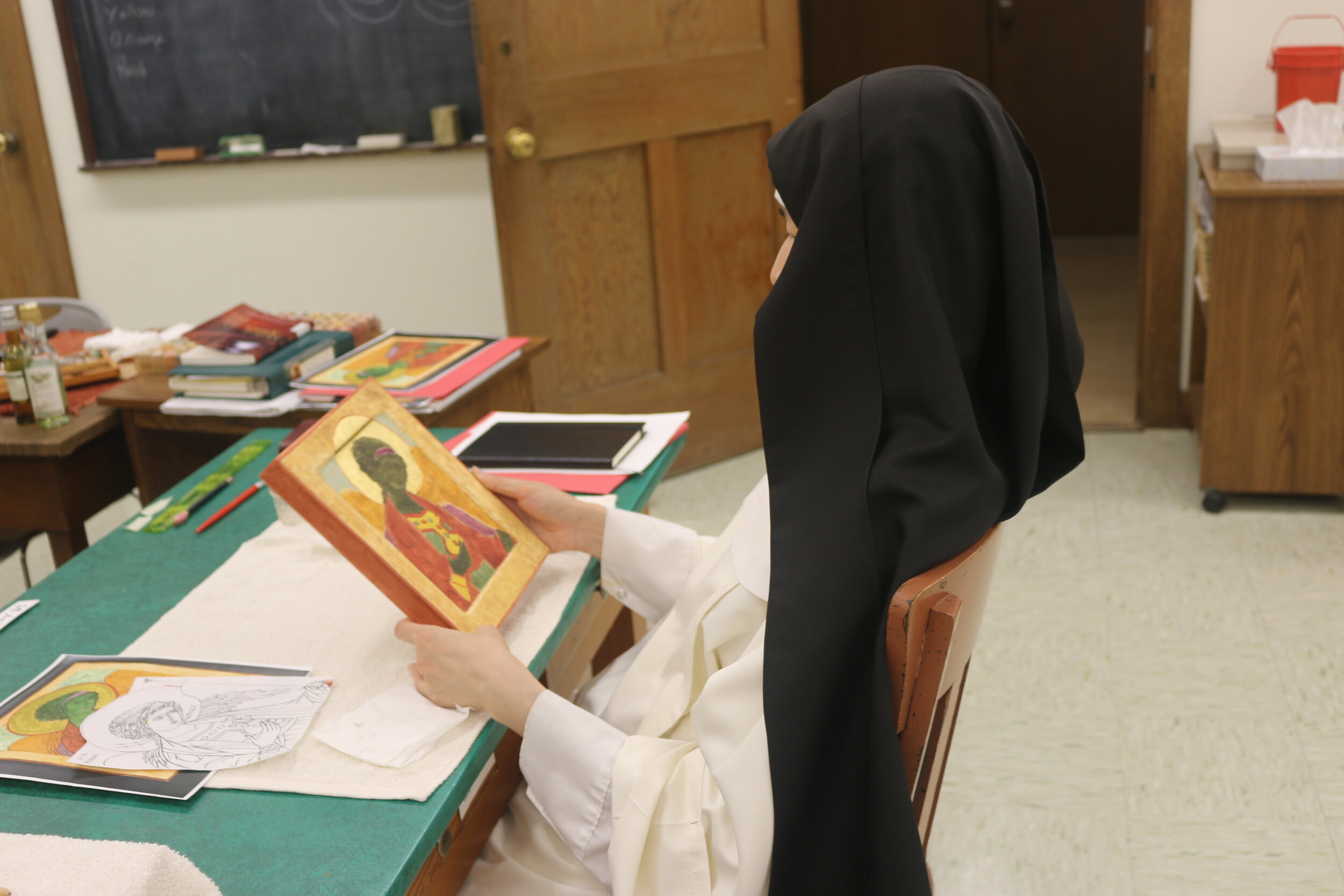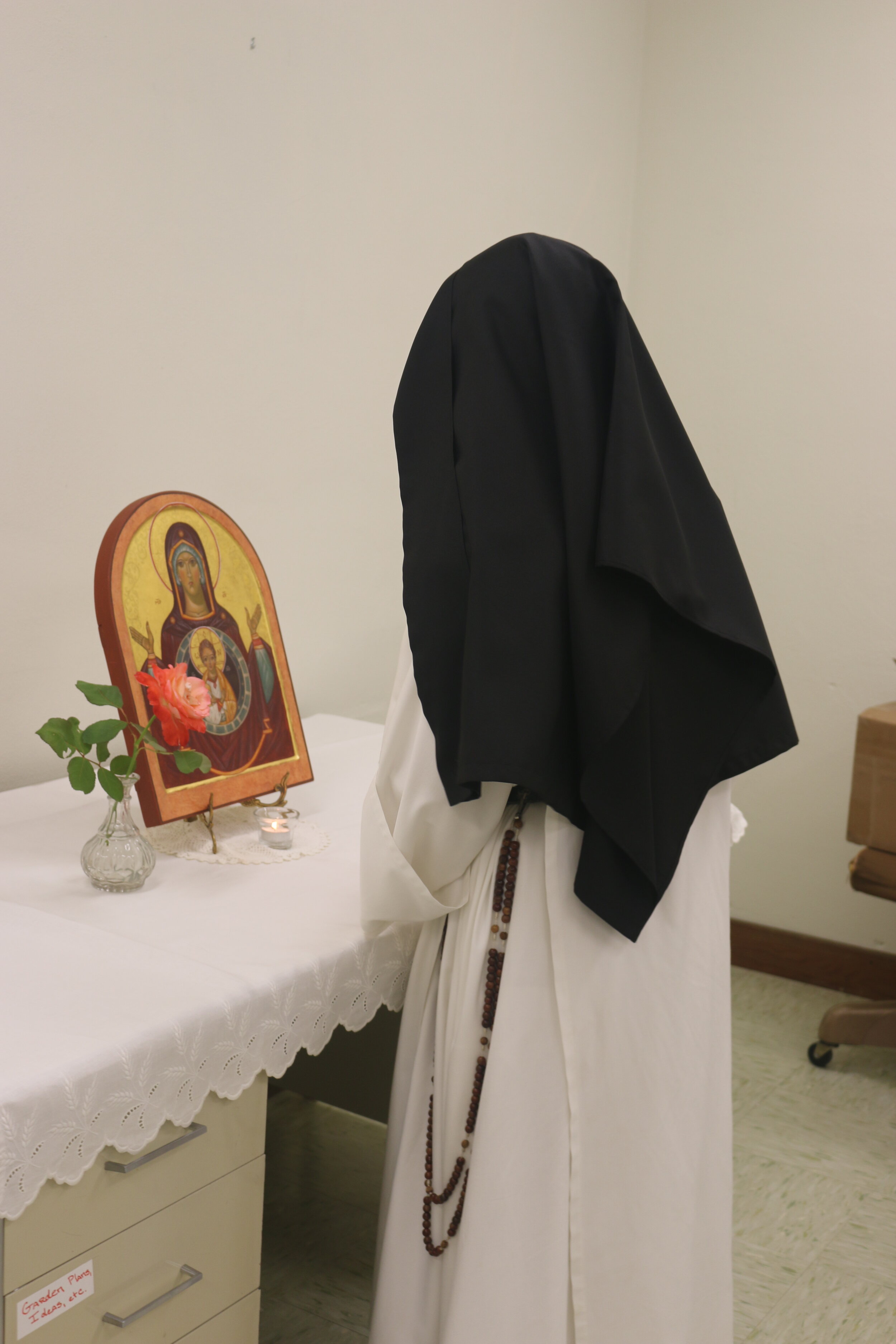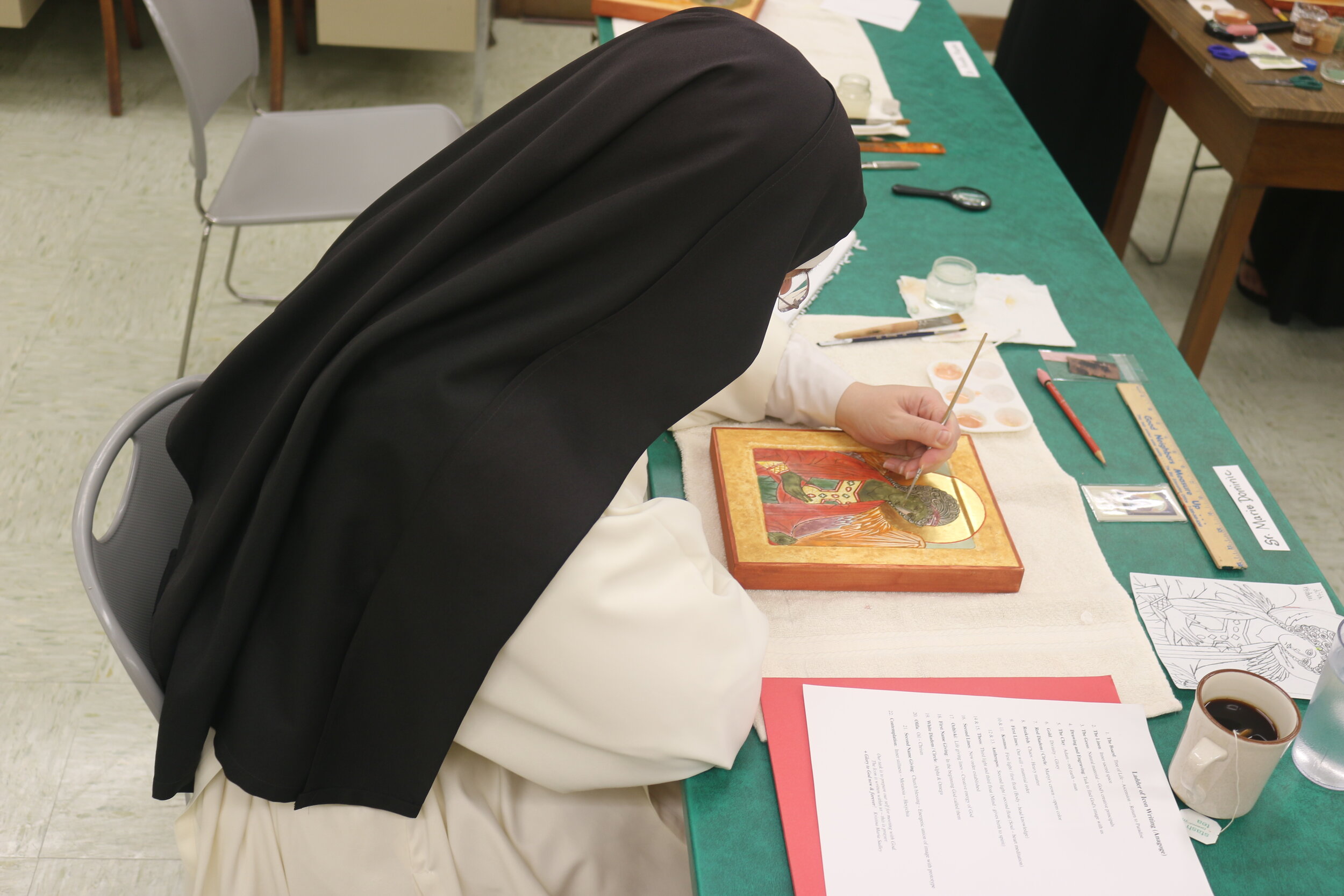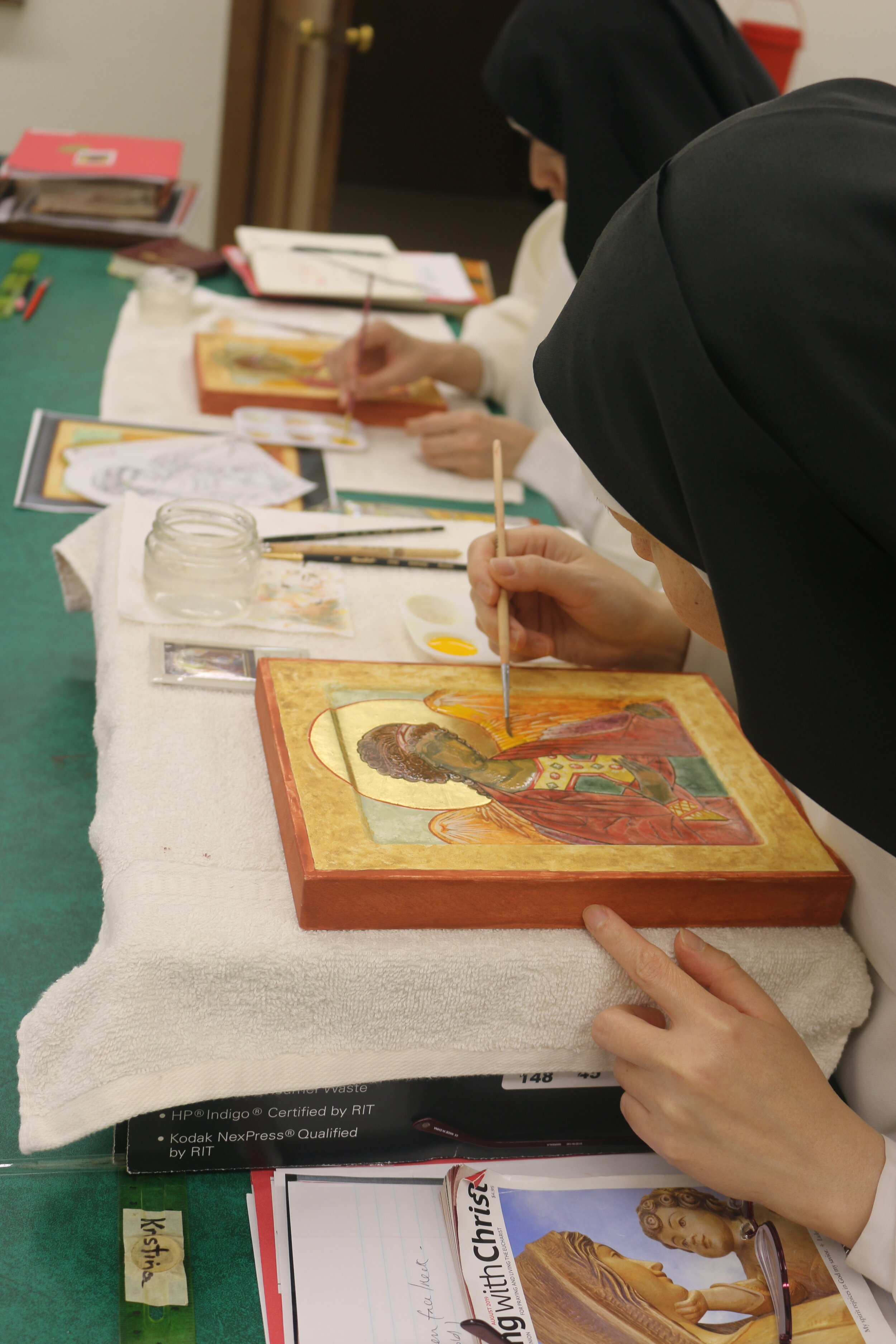Beautiful Preaching: Fra Angelico, the Arts and Iconography
To preach the Gospel, words are not always necessary. Today we remember a Dominican friar who remains one of the most renowned artists of all times: Blessed John of Fiesole, more popularly known as Fra Angelico. Fra Angelico was known to frequently say, “If you seek to do the work of Christ, you must live with Christ.” Fra Angelico was an examplar Dominican preacher - he sought the face of God in contemplation, gave Christ his entire being and became an instrument in His hand to preach the Gospel and draw people to Himself through the beauty of his paintings and frescoes.
This too is the way for the nuns of the Order of Preachers. And as each individual is given charisms for the building up of the Church, it is not uncommon to find monastic communities have general charisms as well, both for preaching some particular aspect of the Gospel and often to help support the community: some communities excel in gardening and the use of natural resources, some in various crafts and the production of goods, and so on. Our community has, from its beginning, had a tradition in the visual and musical arts, which has blossomed through the course of time in various ways: producing vestments and ecclesiastical linens, Gothic calligraphy and illuminating manuscripts, fine artwork, photography and digital design, and most recently iconography.
Last fall, our community had an extraordinary opportunity to begin learning an ancient form of prayer and preaching: iconography. Several of our younger sisters have had a desire to learn more about iconography (writing icons) and iconology (the study of icons) and, through the workings of Divine Providence and the generous support of benefactors, several sisters in our community spent a week in an intensive icon retreat with iconographer Kristina Sadley of Prophecy Designs Icons and an affiliate instructor for the Prosopon School of Iconology.
“Icon” is Greek for “image” and traditional icon writing is a prayerful discipline of hand, heart, and mind to bring forth the “Gospel in color” – every canonically written icon reveals Christ, and comes from within the iconographer and his/her prayer.
The week began with Mass, confession, and a blessing of our icon boards and our sister iconographers. Once in our “iconography studio”, we began each morning with prayer, giving glory to the Holy Trinity, asking for grace and illumination as we worked and interceding for those who would venerate the icons we were writing. Except for instructions, our time was largely spent in silence.
We quickly learned that everything in iconography has meaning and purpose – every feature, every color, every step in the process. For example, the wood of the board – a symbol of the wood of the cross; the whiteness of the board – purity and light. Our first step was to trace the image of our icon onto the board using carbon paper, then, once traced, we etched into the white gesso layers with a stylus so our lines would not be lost as we began to apply clay, gold and pigments. This parallels our own life when we receive the Gospel – lightly at first, but when we cooperate with God’s grace, He etches His Word into our hearts.
The next step was also profoundly meaningful to many of us – applying the clay bole and the goldleaf for the icon’s halo. The clay bole represents our humanity. The gold represents God’s glory and divinity. To have the gold adhere properly to the clay, the iconographer must get very close to the clay, with goldleaf piece ready in hand, and breathe deeply but gently on the clay to warm it, reminding the iconographer that God breathed life into Adam. After two or three breaths, the gold is quickly applied and pressed gently onto the warmed clay, and the iconographer moves to the next small section of the halo to begin again. Once the gold is applied, the first color is applied to the board – a bright red line is added to encircle the halo – the blood of Christ and the white has now been broken open into color.
So by now you may be asking, “which icons did the sisters write?” Mary? Jesus? A festal scene? You may be surprised (as we were) to learn we had no choice about our first icon – we would all be writing Saint Michael. But then, Kristina explained why: iconography, as prayer, is a battle – it is spiritual warfare in a profound way. And so we begin with Saint Michael, who is prince of heaven and our help in spiritual battles against the devil. Saint Michael reminds us, “who is like God?” He helps us keep right perspective in humility and our eyes Christ. It is also for these reasons that an iconographer does not part with his or her first icon.
Our first icon completed, our new iconographers are making plans to begin writing their second icon, Saint Gabriel. As Saint Michael helps us grow in humility and clear out the sins and blocks in our hearts and lives to God’s grace, Saint Gabriel brings the Good News and helps us fill our souls with God’s goodness, truth, and beauty.
We give thanks to Kristina and our benefactors whose generosity opened the door for us to this ancient method of prayer and visual preaching of the Gospel. May Fra Angelico intercede for all artists and those who use visual means to promote the goodness, truth and beauty of the Gospel. Saint Michael, Saint Gabriel and Fra Angelico, pray for us!
Want to learn more about assisting our arts and iconography studio or other opportunities to support our cloistered Dominican life? Email us or visit our website. Thank you and God bless!
